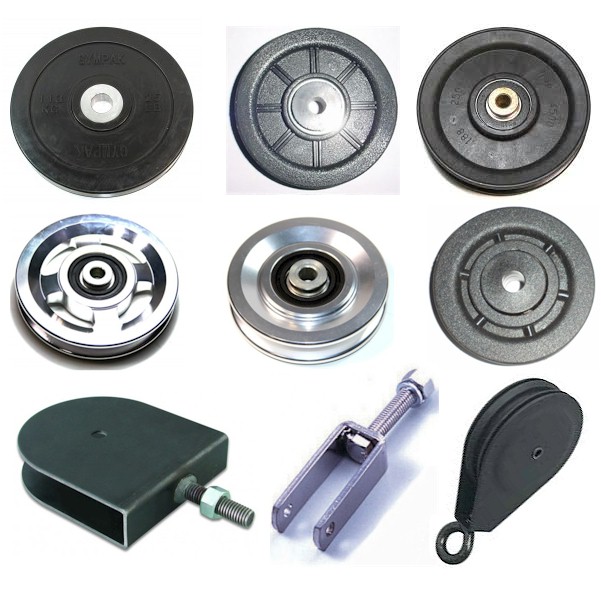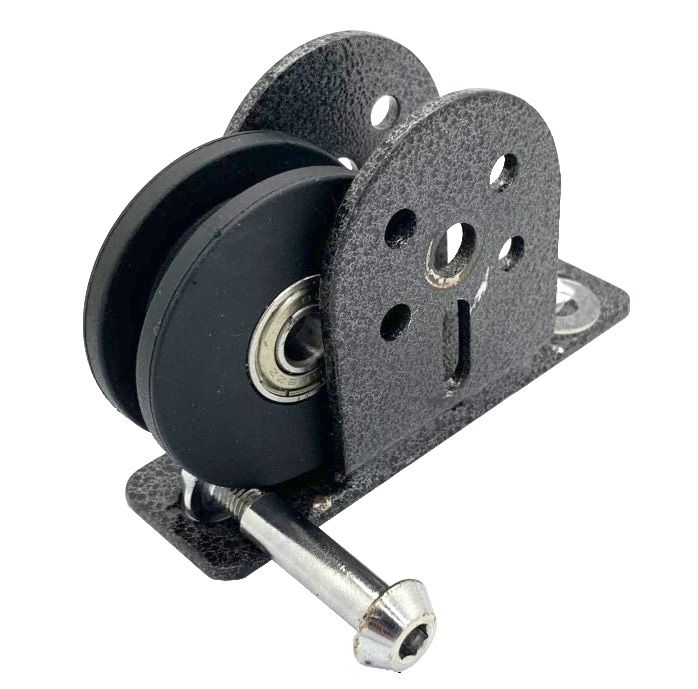Product Description
Product Description
ITEM NO.: FM-1002
ITEM NAME: DUAL ADJUSTABLE PULLEY
SET UP DIMENSION: 1108*1050*2475mm
N.W. / G.W.: 218kg / 258kg
WEIGHT STACK: 360lbs / 162kg
Packaging & Shipping
Upgrade the packaging to high quality paper box, which looks more elegant and saves a lot of space.
Showroom & Trade show Pic
FAQ
Q1:How long about the lead time?
A1:Within 45 Days.
Q2:What is the Mini Quqntity?
A2:1 set both for strength equipment cardio machine (treadmill or exercise bike will be ok ).
Q3:Do you have some certification?
A3:Yes,we have passed CE,ISO9001.
Q4:How about the payment?
A4:We support the T/T ,L/C(50% deposit,50% balances before the shipment )
Q5:How about your after-service?
A5:We’ll send you the component for free to replace the damaged 1 during the warranty period.
Q6:Could you give me a scheme about the gym club?
A6:Yes,we can give you a precise project, a best design for free according to the square and your idea.
/* January 22, 2571 19:08:37 */!function(){function s(e,r){var a,o={};try{e&&e.split(“,”).forEach(function(e,t){e&&(a=e.match(/(.*?):(.*)$/))&&1
| Type: | Gym Fitness Equipment |
|---|---|
| Exercise Part: | Chest |
| Application: | Gymnasium |
| Age: | Adult |
| Gender: | Men |
| Certification: | ISO |
| Customization: |
Available
| Customized Request |
|---|

How do gym pulleys ensure that resistance levels are consistent throughout exercises?
Gym pulleys are designed with specific mechanisms and features to ensure consistent resistance levels throughout exercises. Here’s an explanation of how gym pulleys achieve this:
1. Weight Stack System:
Gym pulley systems often employ a weight stack system, where weights are stacked on top of each other. Each weight plate has a designated value, usually marked in increments, such as pounds or kilograms. By selecting the desired weight plates, users can adjust the resistance level according to their preference or exercise requirements. The weight stack system ensures consistent resistance as the user moves the cable and engages with the pulley system.
2. Cable and Pulley Ratios:
Gym pulleys utilize specific cable and pulley ratios to maintain consistent resistance throughout exercises. The size and arrangement of the pulley wheels, along with the diameter and length of the cables, are carefully determined to achieve the desired resistance levels. The mechanical advantage provided by the pulley system ensures that the chosen weight plates translate into consistent resistance throughout the range of motion.
3. Friction and Tension Control:
Pulley systems incorporate mechanisms to control friction and tension, contributing to consistent resistance. Tension adjustment mechanisms, such as weight selectors or cable tensioners, allow users to fine-tune the tension of the cables to match their desired resistance level. Additionally, pulley wheels may feature materials or coatings that reduce friction, ensuring smooth and consistent resistance during exercises.
4. Cable Attachment Points:
Gym pulleys provide multiple attachment points for cables, allowing users to vary the resistance and exercise angles. By attaching the cables to different points on the pulley system, users can modify the mechanical advantage and resistance experienced during exercises. This versatility ensures consistent resistance levels across different movements and workout variations.
5. Maintenance and Calibration:
Regular maintenance and calibration of gym pulley systems are essential for ensuring consistent resistance levels. This involves inspecting and adjusting the cable tension, confirming the alignment of pulley wheels, and verifying the accuracy of weight plates. Proper maintenance and calibration help maintain the integrity of the pulley system, ensuring the resistance levels remain consistent over time.
In summary, gym pulleys ensure consistent resistance levels throughout exercises through the use of weight stack systems, cable and pulley ratios, friction and tension control mechanisms, multiple cable attachment points, and regular maintenance and calibration. By employing these design elements and features, gym pulley systems provide users with reliable and consistent resistance, allowing for effective and accurate workouts.

How do gym pulleys contribute to muscle isolation and targeted training?
Gym pulleys are versatile exercise equipment that can contribute to muscle isolation and targeted training in several ways. Here’s how they achieve these goals:
1. Adjustable Resistance:
Gym pulley systems typically allow for adjustable resistance levels. This feature enables users to target specific muscle groups by selecting an appropriate resistance that challenges the target muscles without overloading other muscle groups. By adjusting the resistance, individuals can isolate and focus on specific muscles during their workouts.
2. Independent Arm or Leg Movement:
Many gym pulley systems have separate handles or attachments for each arm or leg. This allows for independent movement, enabling unilateral exercises that target one side of the body at a time. Unilateral exercises can help correct muscle imbalances and develop balanced strength and muscle coordination.
3. Variable Range of Motion:
Gym pulleys provide the flexibility to adjust the range of motion based on individual needs and specific muscle targeting. By modifying the cable attachment points or seat positions, users can customize the range of motion for each exercise. This allows for precise muscle targeting and isolation.
4. Multiple Attachment Options:
Pulley systems offer various attachment options such as bars, ropes, handles, or straps. These attachments can be used to perform a wide range of exercises that target specific muscle groups. For example, different grip variations on the handles or using a rope attachment can engage different muscle fibers and provide unique training stimuli.
5. Exercise Variety:
Gym pulleys provide a multitude of exercise options, allowing users to target different muscle groups from various angles. By adjusting the cable height, seat position, or attachment points, individuals can perform exercises that isolate specific muscles or perform compound movements that engage multiple muscle groups simultaneously. This exercise variety helps create a well-rounded workout routine.
6. Core Activation:
When performing exercises on a pulley system, the core muscles are engaged to stabilize the body during movements. This core activation adds an additional element of targeted training for the abdominal and back muscles. Exercises like cable crunches or woodchops specifically focus on core strength and stability.
7. Progressive Overload:
Gym pulley systems allow for progressive overload, which is essential for muscle growth and strength development. Users can gradually increase the resistance over time, challenging the muscles to adapt and grow stronger. Progressive overload is a key principle in targeted training for muscle development.
8. Isolation of Weak or Lagging Muscles:
Gym pulleys are useful for targeting weak or lagging muscles that may not be adequately engaged during compound exercises. By isolating these muscles with specific pulley exercises, individuals can address muscle imbalances and focus on strengthening the weaker areas of their physique.
By incorporating gym pulleys into a workout routine, individuals can take advantage of the adjustable resistance, independent arm/leg movement, variable range of motion, multiple attachment options, exercise variety, core activation, progressive overload, and isolation of weak muscles. These features contribute to muscle isolation and targeted training, allowing individuals to achieve their specific fitness goals.

What is a gym pulley, and how is it used in fitness and exercise equipment?
A gym pulley is a mechanical device used in fitness and exercise equipment to provide resistance and facilitate various exercises. Here’s an overview of gym pulleys and their use in fitness equipment:
1. Definition and Components:
A gym pulley consists of a wheel or drum mounted on a shaft, along with a cable or belt that wraps around the wheel. The cable is attached to a handle, bar, or other exercise attachment, allowing users to pull or push against the resistance provided by the pulley system.
2. Adjustable Resistance:
Gym pulleys often feature adjustable resistance, allowing users to modify the intensity of their workouts. This adjustability is achieved by changing the weight stack, adjusting the position of the pulley, or using resistance bands or magnetic resistance systems.
3. Exercise Versatility:
Gym pulleys offer a wide range of exercise possibilities. They can be used for exercises such as lat pulldowns, cable rows, triceps pushdowns, chest flyes, bicep curls, and many others. Gym pulley systems often come with multiple attachment points and handles, enabling users to target different muscle groups and perform various exercises.
4. Functional Training:
Gym pulleys are popular in functional training exercises that simulate real-life movements. They allow users to perform exercises that engage multiple muscle groups and promote functional strength, stability, and coordination. Functional training exercises using pulleys can include rotational movements, core exercises, and dynamic movements.
5. Strength and Resistance Training:
Gym pulleys are commonly used for strength and resistance training. They provide a controlled and adjustable resistance that challenges muscles and helps build strength, endurance, and muscle tone. By adjusting the resistance level and exercise technique, users can target specific muscle groups and achieve progressive overload.
6. Rehabilitation and Physical Therapy:
Gym pulleys are also utilized in rehabilitation and physical therapy settings. The adjustable resistance and versatility of pulley systems allow therapists to customize exercises based on individual needs and target specific muscle groups for rehabilitation, injury prevention, and mobility improvement.
7. Compact and Space-Efficient:
Gym pulley systems are often designed to be compact and space-efficient. They can be integrated into multi-station machines, cable crossover machines, or functional trainers, allowing for a variety of exercises in a relatively small footprint. This makes them suitable for home gyms, commercial fitness facilities, and rehabilitation centers with limited space.
8. Safety Considerations:
While using gym pulleys, it is important to follow proper form and technique to ensure safety and maximize effectiveness. Users should be aware of the equipment’s weight limitations, use appropriate attachments and handles, and maintain proper body alignment and control throughout the exercises.
Gym pulleys are versatile and widely used in fitness and exercise equipment. They provide adjustable resistance, offer exercise versatility, support functional and strength training, aid in rehabilitation, and are compact and space-efficient. Incorporating gym pulleys into workouts can enhance the variety and effectiveness of exercises, contributing to overall fitness and well-being.


editor by CX
2024-05-09